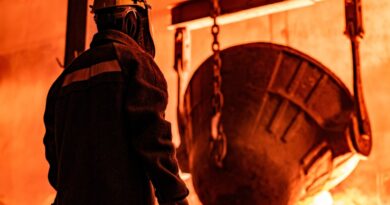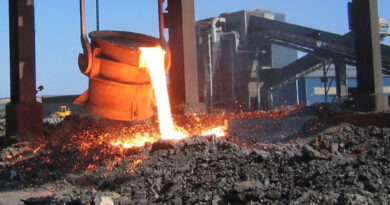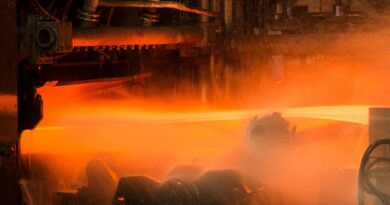Submerged arc furnaces for ferrochrome production
The purpose of SAF is to produce ferrochrome by reducing chromite ores and concentrates. Whereas iron oxides can be reduced into iron with carbon in for example blast furnaces, the reduction of chromium with carbon requires temperatures too high to be implemented in blast furnace type ovens. SAF, which is the best available technology for high carbon ferrochrome production, uses electric current to increase temperature and to enhance the reduction reactions of the chromite.
Concerning the modelling of this process, it is necessary to know what is the influence of the used electric current on the physical and chemical properties of the used materials (i.e. ores, concentrates, coke, silica) as well as on the physical and chemical phenomena taking place in the furnace (i.e. chemical reactions, heat transfer, flow patterns, electric conduction, and so on). With this information, it is possible to estimate, how the amount and quality of the product as well as the energy consumption of the process are influenced if the electric current or the amounts, compositions and/or grain size distributions of the raw materials were being changed.
Although the reduction reactions of the chromite have been studied, the influence of the electric current on the reduction reactions is usually omitted as anything else but a heat source. Experiments conducted by Rousu et al. (2010) indicated the enhancing effect of electric current on the reduction reactions thus giving a little information concerning the dependencies between the current and the reactions. On the other hand, based on the analyses of the samples taken from the actual SAF process, Ollila et al. (2010) have concluded that the electrical properties of the materials change drastically as the reduction of the chromite proceeds. The same study also indicated the circulation phenomena of zinc, sulphur and the alkali that need to be considered in the modelling of the SAF process. (Ollila et al., 2010) However, the amount of information at the moment is not sufficient enough for proper modelling of the SAF phenomena and more experimental research is required before comprehensive models concerning the SAF could be presented.



